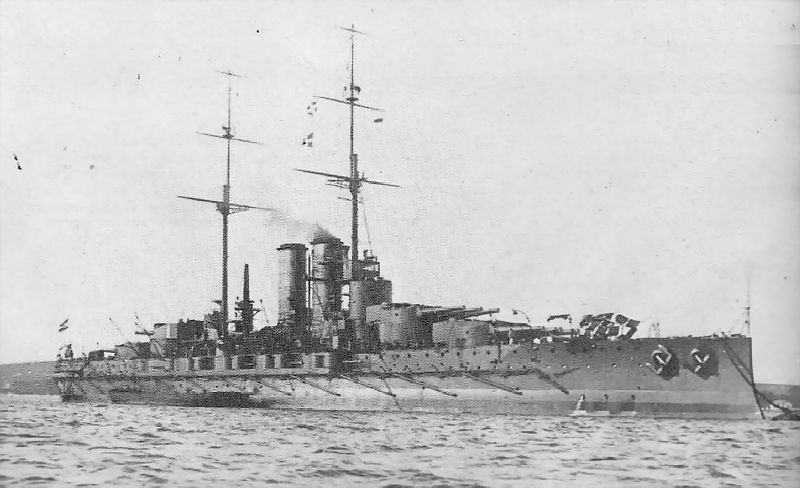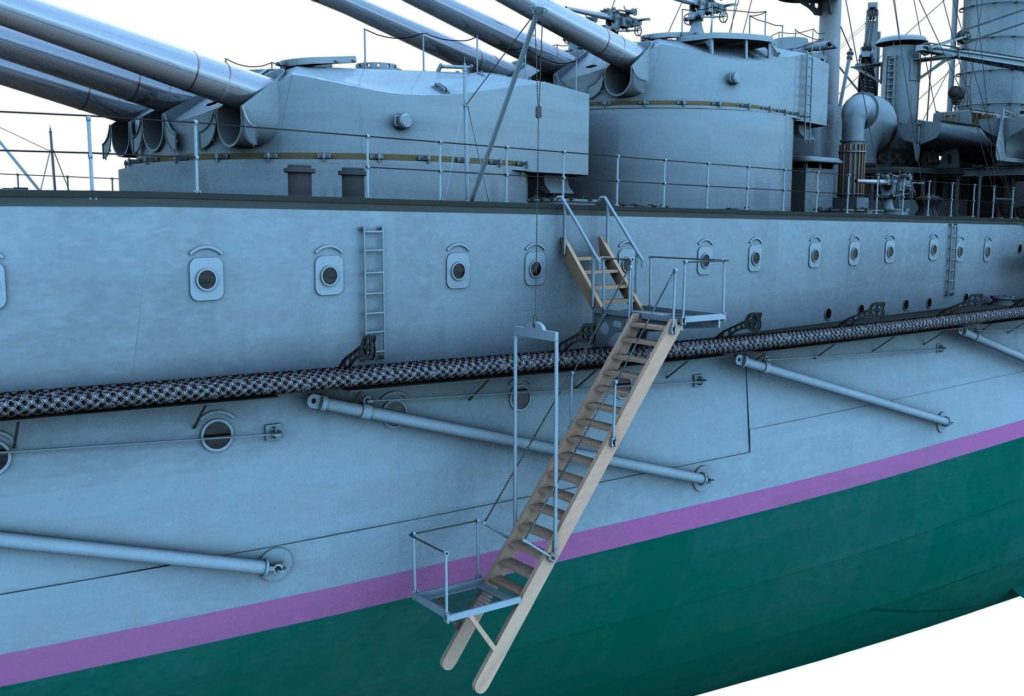

But neither the Habsburg or the German government’s (nor their armed forces), had much faith that the Italians would side with their allies in any future European war. Bizarrely the Italian navy laying at anchor in its bases a short distance across the Adriatic was in theory an ally to the Austro-Hungarian empire. The Tegetthoff’s were conceived and built in the main as an answer to Italian naval expansion. It is hard to recall another class of Dreadnought that had such a flawed foundation, both from within its design and by those who brought them into the world. (The Kaiser’s High Seas fleet prior to the Armistice lost 0% of its Dreadnought force and 16.66 % of its Battlecruisers, or one from a total of 6, (Blucher excluded). The battered and defunct Habsburg (or Austro-Hungarian) navy had by 1918, the unique record of being the only ‘sea-power’ to emerge from the Great War with 50% of their Dreadnought force lost through enemy action. I think we can say from the start the Tegetthoff’s were a flawed creation. But for all these flaws and the life’s they were to cost, the Tegetthoff class is one of the most fascinating in a genre of warship that has been lost to technological advancement in naval design.

He was to be run down in the post war years by a tram he neither heard nor saw coming! His Dreadnought creations were conceived through a process that saw political scheming and ‘untruths’ told. Of all the battleships that were created in the years prior to the First World War, the four ships of the Tegetthoff class, ( SMS Viribus Unitis, SMS Tegetthoff, SMS Prinz Eugen and SMS Szent István) were probably the most flawed, born from a designer, Siegfried Popper with failing eyesight and a growing deafness, who refused to take sage advice from the German Admiralty in ship design. They were to be lost not to a blow by blow exchange of fire with their peers, but to Italian torpedoes and limpet mines carried into battle by fast torpedo boats and frogmen. But aside from a bombardment of the Italian mainland, they were never to fire their powerful main armament in anger. These status symbols were in their short lifetime to serve through 4 years of war and by the time the guns fell silent across the battlefields of Europe, 50% of that new dreadnought force lay on the seabed. Enjoy his examination of one of the First World War’s least known dreadnoughts!įor less than 5 years, (1913-1918) the Austro-Hungarian Empire had a navy that was in part comprised of the latest ‘must-haves’ for a pre-World War One ‘Super-power, the all big gun dreadnought, (or battleship). He was kind enough to share some information about the Tegetthoff class, giving you a small taste of what’s in store. Foreword – Andy South has revised his book on the Tegetthoff class dreadnought.


 0 kommentar(er)
0 kommentar(er)
